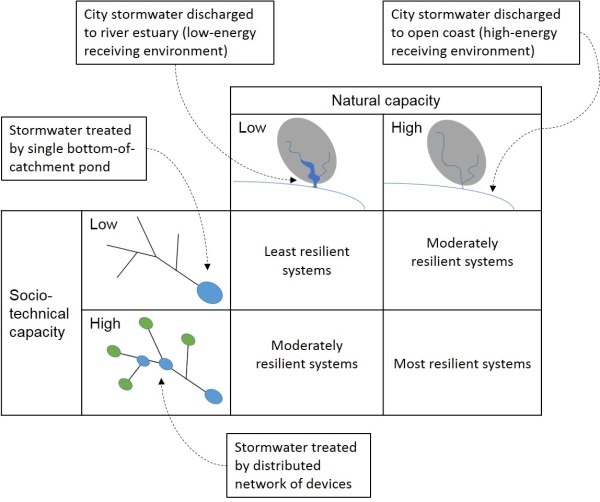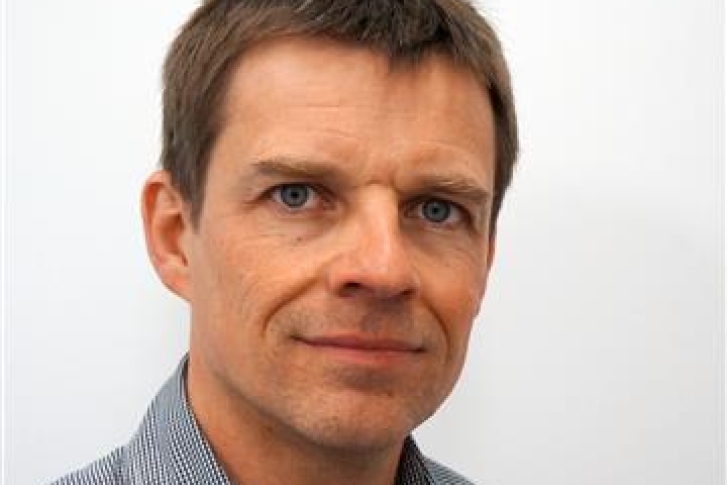Water Sensitive Urban Design (WSUD) has emerged as a form of development that, among other objectives, aims to deliver resilient water ways providing a range of benefits to urban communities. NIWA’s Urban Aquatic Environments group has investigated how resilience concepts provide a basis for discriminating between WSUD and conventional urban development approaches.
The research characterised urban areas and associated waterbodies, as an urban aquatic social-ecological system (SES), made up of two groups of elements. Socio-technical elements comprise the built environment and its management. Natural elements of the system are the urban waterbodies that provide ecosystem services (benefits) to society. Changed hydrology, poor stormwater quality and the modification of waterbodies associated with urban development brings challenges for maintaining ecosystem services provision in an urban aquatic SES.
Building on an existing decision support system (DSS), a new method for assessing ecosystem resilience was developed. The method assesses scores reflecting the socio-technical capacity (STC) and natural capacity (NC) associated with an urban development scenario (see figure). The STC score is based on multiple criteria used to assess the characteristics of stormwater infrastructure and management. A higher score reflects stormwater systems that feature characteristics such as multifunctionality, redundancy and diversity. The NC score is based on an assessment of the state and trajectory of biophysical attributes of the system. A higher score reflects ecological indicators that are assessed as, unlikely to cross a threshold, marking a change to a degraded ecological regime.
By modelling a series of hypothetical urban development scenarios in Auckland the method was shown to discriminate between WSUD and conventional development approaches. However, some of the results exhibited hysteresis effects, with the ability of WSUD to improve the state of the system strongly influenced by the presence of the legacy effects of previous development. The method was found to provide a source of additional, valuable information that complements other indicators in the DSS by providing a snap-shot of the interaction of catchment management effort and outcomes and indicating the likely future state of the SES.
The research has recently been published in the journal Ecology & Society, which focuses on topics relating to the ecological, political, and social foundations for sustainable social-ecological systems.
Further information
Moores, J. P., S. Yalden, J. B. Gadd and A. Semadeni-Davies. (2017). Evaluation of a new method for assessing resilience in urban aquatic social-ecological systems. Ecology and Society 22 (4):15. https://www.ecologyandsociety.org/vol22/iss4/art15/
Funding
Research was conducted under the MBIE-funded “Resilient Urban Futures” (RUF) programme.
More articles: Freshwater Update 76, March 2018


